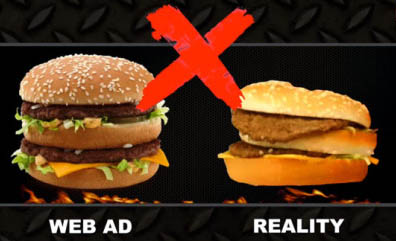1 Opening Concepts
Before we can explore ethical concepts and case studies, we need a brief overview of the relationship between law and ethics. Let’s open with a hypothetical situation.
Study the following presentation slides by using the forward button or clicking on sections of the control bar. To enlarge any interactive presentation in this guidebook, click on the lower-right full-screen option (arrows) .
In journalism and strategic media, professional workers are expected to follow ethical standards. In this online guidebook, we’ll study those ethical standards, paying special attention to recurring problems. We’ll also analyze some sticky situations when journalists don’t fully agree on what’s right.
VALUES:
ETHICAL, NEUTRAL and UNETHICAL
Ethical terms may vary among courses and books. For our introductory content, let’s focus on three concepts:
1. Ethical Values – These are values that most if not all people in a society or culture would view as acceptable or desirable. If everyone followed these values, we might all benefit. Here are several examples:
- Honesty
- Compassion
- Kindness
- Fairness
- Trustworthiness
- Inclusion
Ethical journalists will always report fair, honest information and thereby gain the trust of their audience and peers.
URGENCY vs. EMPATHY
 Lauryn Higgins is a two-time Pulitzer Prize winning journalist whose work focuses primarily on public health and wellness. Her work tracking COVID-19 at the New York Times was part of a team that won the 2021 Pulitzer Prize for Public Service. In the following audio, she uses an example from the pandemic to emphasize the sacred line between urgency and empathy in journalism. Higgins is now a faculty member at the University of Arkansas.
Lauryn Higgins is a two-time Pulitzer Prize winning journalist whose work focuses primarily on public health and wellness. Her work tracking COVID-19 at the New York Times was part of a team that won the 2021 Pulitzer Prize for Public Service. In the following audio, she uses an example from the pandemic to emphasize the sacred line between urgency and empathy in journalism. Higgins is now a faculty member at the University of Arkansas.
Brian McGrory, who was the editor of the Boston Globe during the Boston Marathon bombings, offered this additional advice for ethical journalists covering traumatic stories: “Caution is the word.” He stressed that sharing what’s known and not known are equally important.
2. Neutral Values – By themselves, neutral values do not cause harm. They are merely things or ideas that we value even though they can be unrelated to morality. Here are three neutral values that can apply to media professionals:
- Wealth
- Fame
- Professional Prestige
Neutral values do not necessarily undercut our ethical values. As an advertising example, a social media influencer can gain wealth and fame (neutral values) but still behave in an ethical manner by posting content that is honest, trustworthy and inclusive (ethical values).
Neutral values create problems, however, when they cause us to ignore our deeper ethical values. For example, there is nothing wrong with wanting to earn more money –- unless my desire for money causes me to become dishonest or intentionally deceive others, which would be unethical behavior.

3. Unethical Behavior – A person who blatantly disregards ethical values is behaving unethically. As a media example, if I write an advertising script or frame an ad image that I know will mislead consumers and encourage them to buy an inferior or useless product, I am guilty of unethical behavior within the profession, even if I avoid any legal backlash. By deliberately writing the script or using the image in a misleading manner, I am being dishonest, and I am not showing compassion for people who may be deceived by the ad.
ETHICAL DILEMMAS
You may have heard the term “ethical dilemma” or even used it yourself to describe a difficult ethical decision. We can analyze two types of dilemmas:
1. Real ethical dilemmas – This is when one ethical value conflicts with another. For example, a news editor may consider publishing a photo of dead bodies on a street corner to show that innocent citizens are dying in a war. This would be honest, truthful reporting, but it might not seem compassionate to the families of the deceased (and it may risk causing psychological harm if young children view the photo). Which ethical value takes precedent: truth or compassion?
Many of the case studies we will analyze involve real ethical dilemmas.
2. False ethical dilemmas – This can occur when a neutral value takes precedent over an ethical value. For example, a sports journalist may seek professional prestige by being the first to publish incriminating information about a collegiate football coach. Seeking prestige is OK unless it detracts the journalist from verifying the truth before publishing.
Writing for NBCU Academy, Marian Porges explains why the ethical values of accuracy and fairness outweigh the need for speed in a false ethical dilemma:
Being wrong can devastate a journalist’s credibility and reputation — and be harmful to the people or communities being reported on — so it’s important to worry less about being first and more about being right, being accurate, being fair and having the utmost integrity.
• Why basic journalism standards matter – NBCU Academy
A false ethical dilemma typically implies that there are two options, when in fact there may be more options or there may be only one proper choice.
ONLINE CHALLENGES
 Reporter and editor Steven Holmes was a member of a New York Times team that won a Pulitzer Prize for coverage of race relations. He also taught at the University of Arkansas for a semester as a visiting distinguished professor of ethics for the School of Journalism and Strategic Media. In the following audio, he discussed how online journalism has tempted some journalists to “cut corners.”
Reporter and editor Steven Holmes was a member of a New York Times team that won a Pulitzer Prize for coverage of race relations. He also taught at the University of Arkansas for a semester as a visiting distinguished professor of ethics for the School of Journalism and Strategic Media. In the following audio, he discussed how online journalism has tempted some journalists to “cut corners.”
DUAL NATURE OF NEWS MEDIA
In his book The Ethical Journalist, Gene Foreman described the “dual nature” of news media to serve the public while generating a profit. If journalists aren’t careful, the emphasis on eyeballs and profits can lead to unethical reporting.
View the following slides to better understand the dual nature of news.
Advance through the slides by using the forward button or clicking on sections of the control bar.
In short, money matters, but personal or corporate profit should never be more important than a media professional’s honesty, compassion, kindness, fairness, trustworthiness, and inclusiveness.
For a deeper discussion related to the journalistic balance of profit and public access, you can listen to the following audio from Wisconsin Public Radio. Host Rob Ferrett interviewed University of Wisconsin Professor Kathleen Culver about ethical funding models for journalism and the impact of paywalls.
- The information gap created by journalism paywalls – Wisconsin Public Radio
REVIEW OF CONCEPTS
WRITE ABOUT IT
Write approximately three to five sentences for each response. When possible, strengthen your responses with brief supporting content from this chapter.
1. What is the difference between media law and media ethics? Create your own example of a situation in which the two may differ.
2. Identify and briefly discuss one of your personal core values that you would identify as an ethical value, and then identify and briefly discuss one of your values that you would identify as neutral.
3. Explain how the two values you cited in #2 could potentially compete with each other. Include a specific scenario if possible.
4. In your own words, explain the difference between a real ethical dilemma and a false ethical dilemma. Provide a brief example if possible.
5. According to the audio from Steven Holmes, how has online delivery changed the scope of competition for journalists? What are the ethical implications?
6. Explain the dual nature of news media. What are ethical implications?
7. Discuss at least one personal takeaway or reaction based on the chapter audio from Lauryn Higgins.

